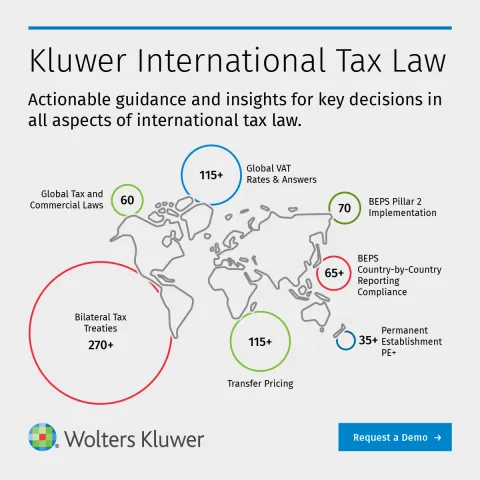The EU’s Tax Landscape: Changes, Challenges and Strategy in a New Geopolitical Order
November 7, 2025
After a decade shaped by the OECD’s BEPS project and successive EU directives aimed at curbing tax avoidance, European policymakers are recalibrating around competitiveness, simplification and geopolitical reality. The result is a dense tax agenda of the European Commission where new priorities, budget debates, Pillar 2 turbulence, transatlantic trade politics and UN tax diplomacy intersect, and often collide. This post distills key recent developments and what they signal for EU tax policy in the months ahead.
The Influence of the BEPS Project on EU Taxation
The BEPS era’s imprint on EU law is unmistakable: the Anti-Tax Avoidance Directive (‘ATAD’), the Pillar Two Directive, changes to the Parent-Subsidiary Directive, the Dispute Resolution Directive and multiple DAC iterations have reshaped the direct tax landscape. Yet some of the Commission’s other proposals, such as BEFIT, DEBRA, Unshell and the proposal for a transfer pricing directive, stalled amid unanimity constraints and stakeholder fatigue. The directives that were adopted largely track OECD consensus, underscoring a structural truth: EU actions that reflect broadly endorsed OECD efforts have a better shot at clearing unanimity hurdles. However, it is debatable whether the tax directives adopted during the BEPS project materially improved the internal market’s functioning or Europe’s competitiveness, the latter now an explicit Commission priority.
A Selection of Key Developments that Impact EU Tax Policy
Competitiveness considerations increasingly shape the agendas of the tax policy makers of the EU. Under the Polish Presidency of the Council of the EU, ECOFIN endorsed a “tax decluttering and simplification” agenda to streamline reporting and reduce overlaps in EU instruments.2Options on the table include removing duplicative obligations under the DAC and reassessing ATAD elements such as interest limitation, hybrid mismatch and CFC rules in light of Pillar 2.3The Danish Presidency is carrying that simplification work forward, while also keeping continuity on compliance priorities such as the EU blacklist and Code of Conduct rules.4By contrast, momentum for new structural architecture has cooled: Member States parked BEFIT and signaled limited appetite for a transfer pricing directive.5 This development prompted the European Commission to withdraw the latter draft directive from its 2026 work plan.6
Budget politics add another layer. The Commission’s proposed 2028–2034 multiannual financial framework (‘MFF’) of around €2 trillion would blend revised existing own resources with three new streams: an e‑waste levy paid by Member States, a fixed share of harmonized tobacco excise, and a contribution from large companies (the proposed CORE).7The CORE concept drew immediate pushback from business and policymakers alike, raising both competitiveness and legal questions. With unanimity required, the discussions surrounding the MFF and own resources package are expected to be lengthy, with significant compromises anticipated.
Pillar 2 is the Gordian knot. The United States’ withdrawal from the 2021 global deal and the floated Section 899 countermeasures put the future of Pillar 2 under intense diplomatic pressure. In June 2025 the G7 reached a political consensus to allow US-parented groups relief from selected Pillar 2 rules if the US agrees to eliminate Section 899.8However, the political agreement reached by the G7 must still be translated into concrete measures that can secure broad support among the broader Inclusive Framework membership. There are several concerns and unresolved questions, including the potential effects on competitiveness for EU companies. Additionally, from an EU law perspective, there is considerable uncertainty over whether implementing such changes would necessitate amendments to the existing Pillar 2 Directive.9Any amendment of the directive requires unanimity; “workarounds” within existing law are uncertain.
Meanwhile, the Belgian constitutional court has referred critical questions on the UTPR’s compatibility with EU fundamental freedoms and rights to the Court of Justice, opening a judicial front that could reshape implementation of Pillar 2 in the EU. This is an important development, and it is not unthinkable that the referral by the Belgian constitutional court might inspire others to challenge the legal validity of any final agreement agreed upon within the Inclusive Framework on the G7 side-by-side agreement before courts.
Calls from industry and politicians to suspend or repeal Pillar 2 reflect competitiveness concerns, but political reality makes a wholesale reversal rather unlikely in the near future. For now, the law in force remains the law in force: DAC 9 and national reporting obligations are advancing, demanding practical readiness from administrations and taxpayers.
Across the Atlantic, headlines about an “EU‑US trade deal” mask significant uncertainties. The July political framework10and the August joint declaration11articulate intent, not a binding Free Trade Agreement. Domestic politics on both sides of the ocean, as well as friction over EU tech regulation and the prospect of digital services taxes, complicate the path from communiqué to legal text. The digital acquis, being the EU Digital Services Act and EU Digital Markets Act, continues to draw scrutiny from US stakeholders, feeding into the broader trade and tax conversation.
Beyond the OECD, the UN process on a Framework Convention on International Tax Cooperation is gathering speed. The Intergovernmental Negotiating Committee has organized work across a general framework and protocols on cross‑border services and dispute prevention/resolution. The EU and its Member States have supported inclusive cooperation in principle but insist on coherence with OECD outcomes and consensus‑oriented decision‑making. Frustration with procedure and direction seems to be growing, and the Member States hinted they could reconsider their engagement if transparency and consensus are not respected.12Whether the UN tracks ultimately complement or compete with the Inclusive Framework will also influence the EU’s posture, and the consistency of global standards.
What should we take from this crowded field?
The first conclusion is that geopolitical shifts are reshaping Europe’s tax agenda. The era when the OECD and its BEPS project set the tone appears to be over, leaving the EU navigating a tangled geopolitical environment and reacting to external pressures more than leading them. Europe’s room for autonomous action is narrowing. EU measures such as Pillar 2, the Carbon Border Adjustment Mechanism under the Green Deal, and tech-sector regulation face pushback from third countries, while U.S. policy increasingly shape Europe’s choices and the UN’s emerging tax cooperation framework might reshape the international tax landscape.
A second conclusion is that the EU is struggling to pivot from a “fair taxation/anti-BEPS” paradigm to one centred on competitiveness. That shift raises tough questions about the continued necessity of parts of the ATAD, like interest limitation rules, hybrid mismatch provisions, and CFC regimes, for companies already subject to Pillar Two. Overlaps can create unnecessary complexity and reporting burdens, yet ATAD and Pillar Two pursue (partially) different aims and apply differently. Even if some EU-level rules are eased, Member States may retain national anti-avoidance measures under their fiscal sovereignty, subject to the jurisprudence from the Court of Justice. However, the broader trend toward competitiveness is clear, and the hope is that it will also advance internal market integration by reducing tax barriers.
Finally, the coming months will be demanding for European policymakers and international tax actors. Even without new directives in direct taxation, the ongoing developments will be pivotal for Europe’s stance on the global stage and could mark a turning point in EU tax policy. Bringing together fairness, competitiveness, EU-wide aims and national sovereignty, while also handling external geopolitical pressures and safeguarding the internal market’s integrity, poses considerable challenges.
Author’s note on AI use: AI‑assisted tools were used solely to enhance readability and structure; all analysis, conclusions and phrasing reflect the author’s own judgment.
- 1Jean-Philippe Van West, Tax Law Professor at Vrije Universiteit Brussel and Senior Counsel PwC Belgium. The opinions expressed in this article are the author’s and do not necessarily reflect those of any organizations with which he is affiliated. This is contribution is a shortened and updated version of Van West J.-P., ‘Een kijk op de Europese fiscale agenda’, Algemeen Fiscaal Tijdschrift, 2025, No. 8, 2.
- 2Council of the European Union, Council Conclusions on a tax decluttering and simplification agenda which contributes to the EU’s competitiveness, 11 March 2025, 6748/25, https://data.consilium.europa.eu/doc/document/ST-6748-2025-INIT/en/pdf.
- 3For a discussion see e.g. KOFLER G., ‘The “Decluttering” of EU Direct Tax Law’, EC Tax Review 2025, 1, p. 2.
- 4Council of the European Union, Programme of the Danish Presidency of the Council of the European Union 2025: A strong Europe in a changing world, 1 July – 31 December 2025,EUDK25, 20, https://danish-presidency.consilium.europa.eu/en/programme-for-the-danish-eu-presidency/programme-of-the-danish-eu-presidency/.
- 5Council of the European Union, Outcome of proceedings: ECOFIN report on Tax Issues, 20 June 2025, 10611/25, 5-8 https://data.consilium.europa.eu/doc/document/ST-10611-2025-INIT/en/pdf.
- 6European Commission, Annexes to the Commission work programme 2026 - Europe's Independence Moment, 21 October 2025, COM(2025) 870 final, 26, https://eur-lex.europa.eu/resource.html?uri=cellar:7f0c63c8-ae8f-11f0-89c6-01aa75ed71a1.0001.02/DOC_2&format=PDF.
- 7European Commission, Proposal for a Counsil Decision on the system of own resources of the European Union and repealing Decision (EU, Euratom) 2020/2053, 16 July 2025, COM(2025) 574 final, https://eur-lex.europa.eu/resource.html?uri=cellar:176f6907-626d-11f0-bf4e01aa75ed71a1.0001.02/DOC_1&format=PDF. https://eur-lex.europa.eu/resource.html?uri=cellar:176f6907-626d-11f0-bf4e-01aa75ed71a1.0001.02/DOC_1&format=PDF.
- 8G7 Finance Ministers’ Communiqué, 28 June 2025.
- 9See e.g. Weber, A full carve-out for U.S. groups for Pillar 2: an EU Constitutional Trojan Horse?, Kluwer International Tax Blog, 6 October 2025.
- 10European Commission, Statement by President von der Leyen on the deal on tariffs and trade with the United States, 27 July 2025, STATEMENT/25/1915, https://ec.europa.eu/commission/presscorner/detail/nl/statement_25_1915; THE WHITE HOUSE, The United States and European Union Reach Massive Trade Deal, 28 July 2025, www.whitehouse.gov/fact-sheets/2025/07/fact-sheet-the-united-states-and-european-union-reach-massive-trade-deal.
- 11European Commission, Joint Statement on a United States-European Union framework on an agreement on reciprocal, fair and balanced trade, 21 August 2025,
- 12DELEGATION OF THE EUROPEAN UNION TO THE UNITED NATIONS IN NEW YORK, EU Explanation of Vote, UN General Assembly 2nd Committee: Tax Cooperation
You may also like






